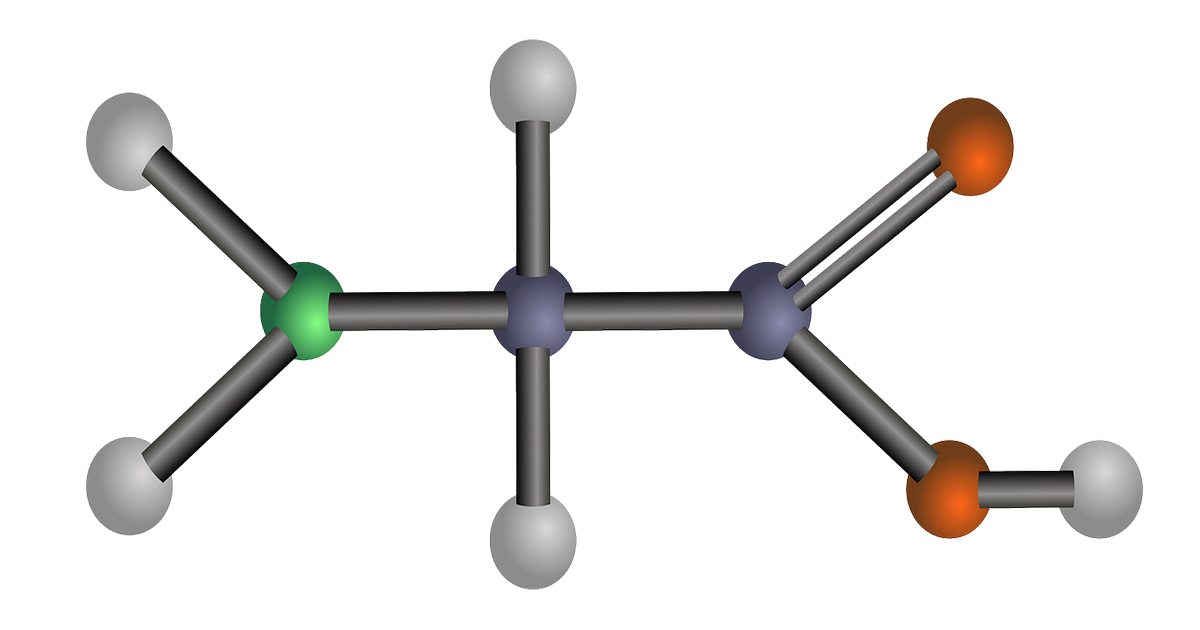Category: Research

Gene Therapy Approaches Milestone; Potential To Cure Diseases Caused By Inherited Gene Defect
You can expect to hear a lot more about gene therapy as a treatment for serious diseases in the years head. Gene therapy is still an experimental treatment in the United States, but holds the potential to cure genetic disorders by replacing a defective gene with a corrected copy of the gene. As The New York Times noted, gene therapy neared a milestone this week.
The European Medicine Agency’s Committee for Medicinal Products recommended approval of a gene therapy medicine to treat lipoprotein lipase (LPL), a rare inherited disorder that involves a defective gene, according to a press release posted Friday on its website. Patients with the disorder cannot produce enough of an enzyme that breaks down fat and may experience life-threatening pancreatitis attacks
If the European Medicine Agency follows the committee’s recommendation, as is typical, the medicine Glybera would be the first gene therapy medication approved for authorization in European countries. No gene therapy has been approved so far in the United States.
Jeffrey Ostrove, chief executive of Ceregene, a gene therapy company in San Diego told The New York Times, that pharmaceutical companies have been reluctant to invest in developing gene therapy drugs because there are no approved medicines. Ostrove said that approval of a gene therapy medicine in western Europe has the potential to change the way gene therapy is viewed.
Researchers have been studying the effectiveness of gene therapy in treating various diseases in clinical trials since a breakthrough discovery in 1989 that an abnormality in one gene on a specific chromosome caused the disease cystic fibrosis. That was a huge discovery. It led to the premise that doctors could cure a patient’s disease by identifying an abnormal gene mutation and replacing the defective gene with a corrected copy. The concept isn’t hard to understand, but making it work is complex. The initial applications of gene therapy are likely to involve rare diseases that may be cured by replacing a single defective gene. Lipoprotein lipase is a good example of that.
Researchers are investigating the applications of gene therapy for treatment of cancer including mesothelioma, a cancer of the lining of the lung caused by asbestos exposure. The University of Pennsylvania has an ongoing gene therapy clinical trial for patients who are newly diagnosed with mesothelioma and patients whose cancer has not responded to other treatments. Patients receive a combination of chemotherapy and a new type of gene therapy called immuno-gene therapy that uses a modified common cold virus to trigger the patient’s immune system to destroy cancer cells. Penn doctors have been encouraged by the response of mesothelioma patients receiving the treatment, Dr. Daniel Sterman an associate professor at the University of Pennsylvania said.
Approximately 2,500 to 3,000 people in the United States are diagnosed with mesothelioma each year with symptoms typically appearing 30 to 50 years after asbestos exposure. The disease is incurable, though there are treatments including chemotherapy, radiation and surgery.
Most people diagnosed with mesothelioma are older workers, retired workers or veterans who were exposed to asbestos fibers in the workplace or military service. Microscopic asbestos fibers when inhaled can lodge in the lungs and remain there a lifetime causing inflammation that eventually leads to asbestos related disease.
Protein Linked to Tissue Inflammation Suggests New Approach To Treating Mesothelioma, University of Hawaii Researchers Say
Asbestos was used extensively at the Pearl Harbor shipyards during World War II and the decades afterward. Today, Hawaii has some of the highest rates of mesothelioma in the nation, according to cancer researchers at the University of Hawaii.
For more than a decade, researchers at the University of Hawaii Cancer Center have been deciphering the molecular processes that cause normal cells to tranform into malignant mesothelioma cells. In a study in the July issue of the scientific journal Cancer Research, they report that malignant mesothelioma relies on a particular protein known as HMGB1 to fuel the growth of tumors. Suppressing the protein may be key to a new approach for treating mesothelioma, which is notoriously difficult for doctors to manage.
Mesothelioma is a cancer of the lining of the chest and abdominal cavities. It develops from inhaling microscopic asbestos fibers that lodge in the thin tissue lining the body cavity causing inflammation that leads to cancer. People in jobs in which asbestos exposure is an occupational hazard such as mining, shipbuilding, maintenance, plumbing and electrical work have a higher incidence of asbestos-related disease.
Medical researcher Haining Yang, an assistant professor at the University of Hawaii, and colleagues have studied asbestos-related disease for more than a decade. In a series of research papers, the Hawaii cancer researchers have detailed how asbestos damages and kills cells through a process called programmed cell necrosis that leads to the release of a protein molecule called HMGB1.
Patients with mesothelioma have elevated levels of the protein in their blood. The researchers suggest the protein may play a critical role in transforming healthy mesothelial cells into cancer cells and fueling the growth of malignant tumors.
In the most recently published study, the researchers treated mice with malignant mesothelioma with antibodies aimed at suppressing the protein HMGB1. They observed that inhibiting HMGB1 reduced the growth of cancer cells and extended the lives of the mice. Their findings suggest that mesothelioma cells rely on HMGB1 and that removal of the protein may produce a therapeutic response in mesothelioma patients, suggesting a new approach for malignant mesothelioma treatment.
Mesothelioma takes the lives of about 3,000 people a year in the U.S. People typically develop mesothelioma symptoms 20 years to 50 years after exposure to asbestos. The incidence of mesothelioma has risen steadily in the last decade in some parts of the world, including Europe and China.

Research Focuses on Treatments That Target Mesothelioma Tumors
For 15 years, Dr. Raffit Hassan, a clinical oncologist at the National Cancer Institute, has been researching the protein mesothelin and its use in the treatment of mesothelioma. Mesothelioma is a cancer of the lining of the chest cavity and abdomen associated with exposure to asbestos.
A protein, mesothelin is present in normal tissue. But certain types of malignant tumors including mesothelioma express high levels of the mesothelin, making it a useful target for tumor-specific drugs. The ultimate goal of the National Cancer Institute is to develop new treatments for mesothelioma and other forms of cancer.
“Mesothelioma is not a very common disease, but it’s a tumor for which we really need to develop a good treatment,” Dr. Hassan said during a recent teleconference sponsored by the Meso Foundation, which provides information, research funding and advocacy for mesothelioma victims.
The first drug targeting mesothelin that Hassan has studied in clinical trials involving mesothelioma patients was Amatuximab, an experimental drug developed by Morphotek, a Pennsylvania company that develops cancer treatments. The treatment is an immunotoxin,a human-made protein that is designed to bind to cancer tumor cells, then inject toxins to kill them.
“I have been working on the same project for 10 years,” Dr. Hassan said. “I think we are starting to see some good results.”
The drug has been through phase I and II clinical trials and the results will be presented this summer. It has not yet been approved by the Food and Drug Administration.
The researchers are evaluating whether the drug when combined with chemotherapy drugs is more effective at controlling mesothelioma.
“The results show the drug is safe and there is activity,” Hassan said. “To be really sure the drug benefits patients we’ll need to do a randomized clinical trial. That will be the next step.”
Approximately 3,000 people are diagnosed with malignant mesothelioma each year. Most are older workers, retired workers and veterans were exposed to asbestos dust in the workplace or during military service. Symptoms of mesothelioma typically take 20 to 40 years to appear. But the cancer is aggressive and more effective treatments are needed to control the disease and extend the lives of mesothelioma patients.
For more information about mesothelioma, click here.

Gene Therapy Moves Scientists One Step Closer to a Mesothelioma Cure
Finding a cure for mesothelioma did not seem possible just several years ago. The asbestos-caused cancer is extremely aggressive, and the cancerous cells invade the lungs and spread throughout the body often rendering standard cancer treatments ineffective against the disease. However, with the recent advances in gene therapy, now being touted as the next frontier in medicine, there is new hope in the medical field that cures are on the horizon for patients with rare and incurable diseases such as mesothelioma.
Ricki Lewis, a New York-based geneticist and author, explores this “next frontier” in her latest book The Forever Fix. The book follows the journey of the use of gene therapy to restore the vision of a young boy who was nearly blind from a hereditary disorder. The doctors replaced the single defective gene in the New York boy’s eyes that prevented his eyes from using vitamin A to send visual signals to his brain. Once the defective gene was replaced, the boy’s vision was restored and no further treatments or surgery were required.
“The goal of gene therapy is to replace faulty instructions,” said Lewis, who has a Ph.D in genetics from Indiana University. “It’s not right for every disease. But it is an approach that can be considered some day along with drugs, surgery and everything else.”
Most rare diseases, of which there are nearly 7,000 in the United States, are caused by a single gene defect, making them better candidates for gene therapy, Lewis said. Cancers, however, are often caused by a combination of genes as well as environmental factors. In the case of mesothelioma, asbestos is known to cause the disease, but researchers now believe a person’s genetics may determine whether they will actually contract the disease.
Lewis points to a study led by Dr. Jill Ohar of Wake Forest University, first reported in Oct. 2009, where as part of a new mesothelioma clinical trial, her team is investigating whether a person’s genes increase the risk of developing mesothelioma. Ohar began her research when she found “that there is a strong tendency for mesothelioma to run in families and it tends to be associated with a family history of cancer, which suggests a genetic susceptibility.”
“Getting at the basis of why one person develops mesothelioma and another person doesn’t, that is going to hold a clue to really fighting it,” Lewis said. “Then we will know what to do the gene therapy on.”
Mesothelioma victims typically show disease symptoms years or even decades after exposure to asbestos in an industrial or manufacturing workplace. The disease is eventually fatal, but aggressive therapy may prolong the lives of patients who are diagnosed early. Hopefully soon, mesothelioma patients will enjoy long, productive lives through research on genetics.
Sources :
- The Forever Fix
http://us.macmillan.com/theforeverfix/RickiLewis - mesothelioma clinical trial
https://clinicaltrials.gov/ct2/show/NCT01590472?term=mesothelioma+and+genetics&rank=1

Enlisting the Body’s Immune System to Fight Mesothelioma and Asbestos Disease
Mesothelioma, a cancer of the lining of the lung and abdomen, suppresses the normal immune system response designed to ward off disease. Scientists have been trying to understand the mechanics of the immune suppression process to develop more effective therapies for mesothelioma, an aggressive form of cancer.
One promising treatment is immunotherapy that enlists the body’s natural defense system to shrink cancerous tumors. A number of immunotherapies are currently being tested in clinical trials. Mesothelioma is among the cancers that appear to be responsive to immunotherapy, researchers say. But the failure of immunotherapies to stop the growth of malignant mesothelioma tumors suggests that the immune suppression process is complex and involves multiple targets.
In an article published in the journal Immunology and Cell Biology, researchers at Harvard University investigate the roles of three factors affecting the immune response: regulatory T cells, intratumoural transforming growth factor (TGF)-â and the protein cytotoxic T lymphocyte-associated antigen-4, which plays a regulatory role in the immune system.
The researchers say that immunotherapy treatments targeting multiple regulators simultaneously appear to be more effective than focusing on one regulator protein that is suppressing immune response. They report that a triple treatment involving all three immune system factors led to long-term shrinkage of tumors and residual resistance to cancer cells if tumors reappeared.
“These data suggest that clinical application of immunotherapies against tumors may be improved by simultaneously targeting multiple mechanisms of immune suppression,” said lead investigator Haydn T. Kissick in a summary of the research.
Mesothelioma is caused by exposure to asbestos fibers. When a person breathes asbestos dust, the microscopic asbestos fibers can penetrate deep in the lungs and cause inflammation and eventually disease.
Approximately 2,500 to 3,000 people a year in the United States receive a diagnosis of malignant mesothelioma. Many victims of mesothelioma are older workers, retired workers and veterans who were exposed to asbestos decades ago in a workplace. The symptoms of mesothelioma typically take 20 years to 40 years to appear, but the disease is aggressive once it appears.
Free Mesothelioma Patient & Treatment Guide
We’d like to offer you our in-depth guide, “A Patient’s Guide to Mesothelioma,” absolutely free of charge.
It contains a wealth of information and resources to help you better understand the condition, choose (and afford) appropriate treatment, and exercise your legal right to compensation.
Download Now